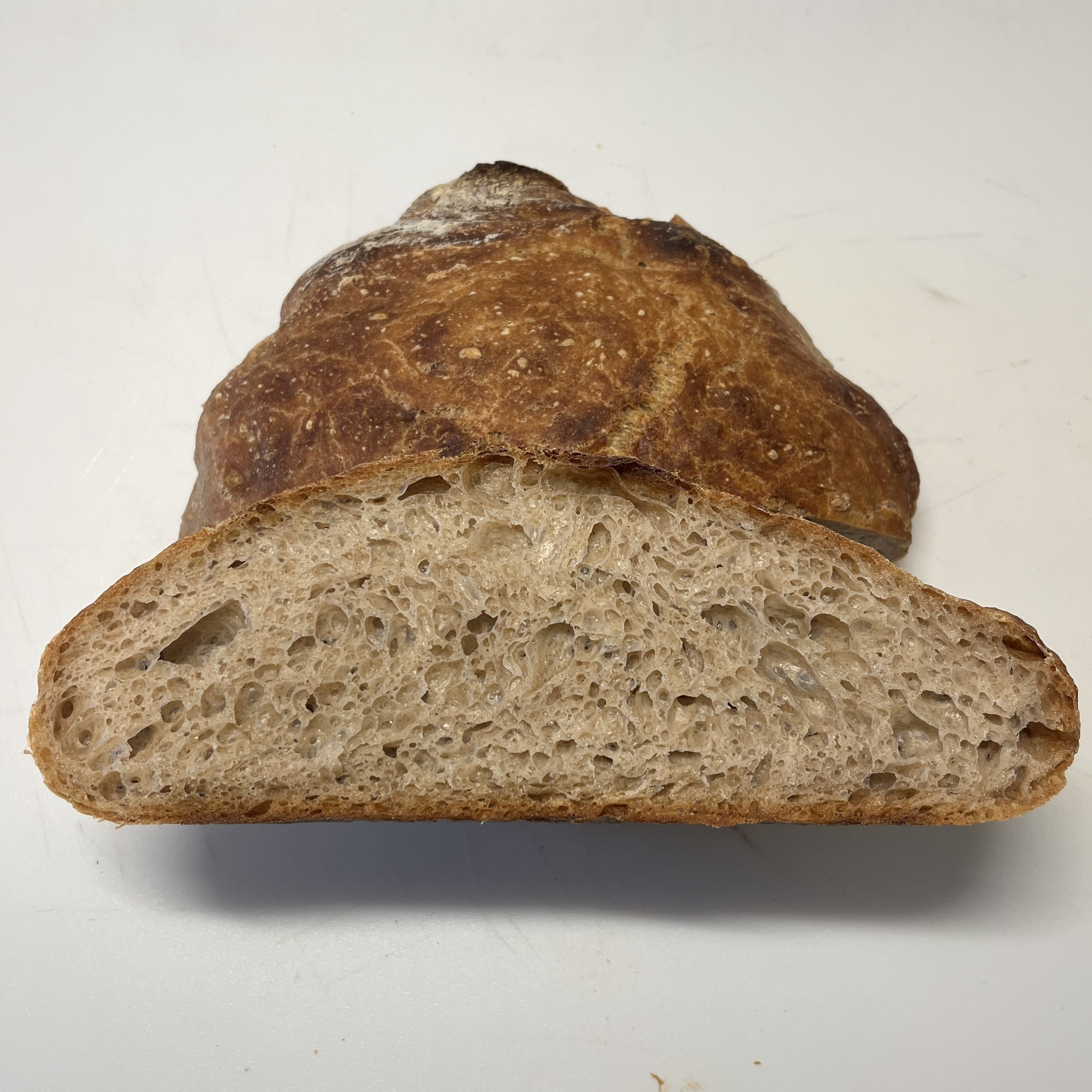Bread is 80% mental, 40% physical
This loaf is 100% ugly. I decided to try a 90% hydration loaf. Because changing one variable at a time is too uncomplicated, I also decided to keep the dough at ~80° for both the auto-lyse and bulk prove. I did this by turning the oven to 350° for two minutes every three hours or so and then turning it off. I use my kitchen time to mark this because otherwise I would probably tell myself this is a great time to do so and so some small pointless task and forget about the oven.
Maintaining the heat resulted in the dough being less a dough and more a bubbling mass of ooblek by the end of the bulk. I have not been resting my dough for 15 minutes after turning it, so I tried to do that here, as well, but was met with minimal success as the dough flattened under its own weight. I folded it, floured the top and set it in the banneton for an hour and when I tried to pour the dough out discovered it had glued to the banneton cover. I’m sure I took a ton of air out of it when I had to scrape it from the banneton, and cutting it was next to impossible. I baked the bread at 460 for 25 minutes, top on, 25 minutes top off.
Dough
150 g bread flour (King Arthur Brand Organic)
250 g whole wheat flour (King Arthur Brand Organic)
100 g rye flour (Bob’s Red Mill Organic)
400 g h2o
80% hydration
10 g salt
1/4 tsp Active Dry Yeast
Levain
10 g starter
50 g all purpose flour (Kirkland Brand Organic)
50 g water
What I did right:
Lol. But for real, I’m getting to a more comfortable place with the folding and turning, even with this loaf being as wet as it was I didn’t freak out, I wet the scraper and my hands and worked the loaf despite it being super wet/soft/runny. And the crumb is nice.
What I did wrong:
Not flouring the top of the loaf sufficiently left it to glue itself to the inside of the banneton, and while I seem to have gotten a decent crumb, I’m sure it would have been even better if I hadn’t had to scrape it off the fabric with a butter knife.
What I learned:
Temperature, as Ken Forkish says, is an ingredient. Having a high temperature throughout resulted in a good crumb and a quick ferment, which is great, it was easy enough to turn on the oven every so often for two minutes at a time to maintain the loaf in the 80s. Having the loaf around 80° when I ended the bulk fermentation seems fine, but I need to toss it into the fridge in the bowl before I do anything further so that it’s manageable.


